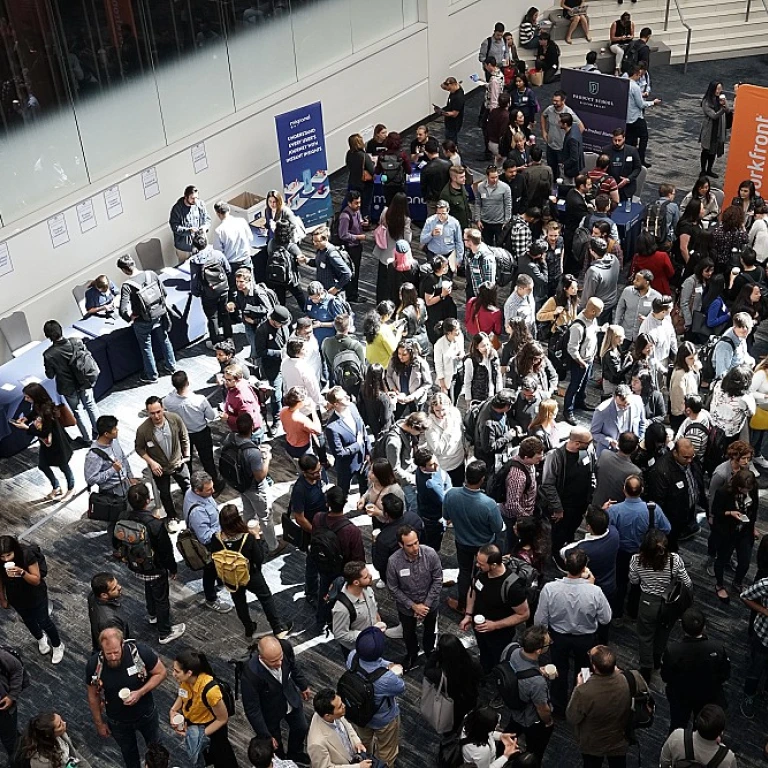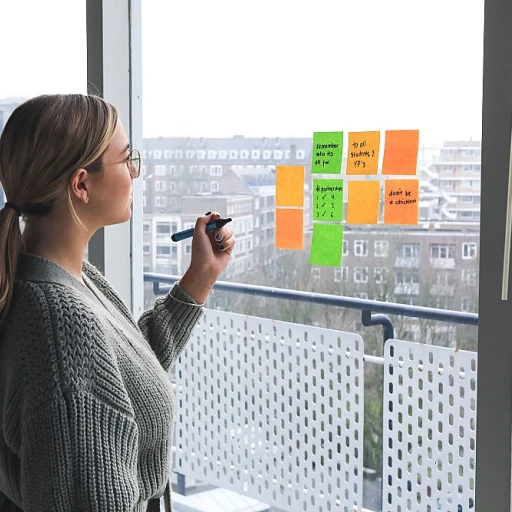Understanding the Employee Lifecycle
Grasping the Flow of Employee Life
The employee lifecycle is a concept that helps organizations understand the various stages an employee goes through during their time with a company. From the moment a potential candidate learns about a job opportunity to the day they exit, each stage is vital in shaping their experience and satisfaction.
Think of it like a story. Every chapter, from recruitment to offboarding, plays a part in the narrative of an employee's life within the organization. This cycle isn't just about ticking boxes; it's about creating meaningful experiences that resonate with employees and foster loyalty.
The Importance of Each Stage
Each stage in the employee lifecycle presents opportunities for the company to connect with its employees. It starts with recruitment, where attracting the right talent sets the tone for everything that follows. The onboarding process is crucial in ensuring new hires feel welcomed and equipped to succeed. As employees settle in, development opportunities keep them motivated and engaged, helping them grow alongside the organization.
But it doesn't stop there. Retention strategies are key to keeping top talent engaged and reducing turnover. And when it's time for an employee to move on, a positive offboarding experience can leave a lasting impression, potentially turning former employees into brand ambassadors.
Feedback and Performance
Throughout the lifecycle, feedback and performance management play a critical role. Regular feedback helps employees understand their strengths and areas for improvement, aligning their goals with the company's objectives. Performance management systems can aid in tracking progress and ensuring employees are recognized for their contributions.
Creating a Supportive Company Culture
A supportive company culture is the backbone of a successful employee lifecycle. When employees feel valued and supported, they're more likely to engage fully with their work. This can be achieved through transparent communication, recognition programs, and fostering an environment where employees feel heard.
For more insights on how to boost your business with a smart learning and development strategy, consider exploring further resources that delve into creating enriching employee experiences.
Recruitment: The First Step in the Journey
Recruitment: The Foundation of a Great Employee Experience
Recruitment is more than just filling a vacancy; it's about setting the stage for a positive employee life cycle. A well-thought-out recruitment process helps attract top talent and aligns with the company's culture and values. This is the first point of contact where potential employees form their initial impressions of your organization. Therefore, it's crucial to make this stage count.
Utilizing effective management software and applicant tracking systems can streamline the recruitment process. These tools can help manage applications, schedule interviews, and provide feedback efficiently. By doing so, companies can ensure that they are engaging with candidates in a timely manner, which is essential for maintaining interest and enthusiasm.
Building a Strong Onboarding Process
Once you've successfully recruited the right candidate, the next stage is onboarding. A structured onboarding process is vital for setting new employees up for success. This stage is not just about paperwork and introductions; it's about helping new hires feel welcomed and integrated into the company culture. A well-executed onboarding can significantly impact employee retention and engagement.
Onboarding software can be a valuable asset in this stage, providing a seamless transition for new employees. It helps manage tasks, track progress, and provide necessary information to new hires. By making the onboarding experience smooth and informative, companies can ensure that employees feel supported from day one.
Incorporating feedback mechanisms during onboarding can also be beneficial. Gathering feedback from new employees about their experience can provide insights into what is working well and what might need improvement. This feedback can help refine the process and enhance the overall employee journey.
Onboarding: Setting the Stage for Success
Welcome Aboard: The Onboarding Process
The onboarding process is the gateway to your company culture and sets the tone for an employee's journey. It's not just about paperwork; it's about making new employees feel like they belong from day one. This stage is crucial because it can significantly impact employee engagement and retention.
Creating a Memorable First Day
Remember your first day at a new job? It can be a mix of excitement and nerves. A warm welcome can make all the difference. Ensure the workspace is ready, introduce them to the team, and provide a tour of the office. These small gestures help new employees feel valued and part of the team.
Structured Onboarding for Long-Term Success
A well-structured onboarding program is more than a checklist. It involves a clear plan that covers the first few months of the employee life cycle. Use onboarding software to streamline the process and ensure nothing is missed. This helps employees understand their role, the company culture, and how they can contribute to the organization's success.
Feedback and Continuous Improvement
Feedback is a two-way street. Encourage new hires to share their onboarding experience. This feedback will help refine the process for future employees. It's also an opportunity for managers to provide constructive feedback, setting the stage for ongoing employee development.
Building Connections and Engagement
Fostering connections is key to successful onboarding. Encourage team lunches or informal gatherings to help new employees build relationships. This not only boosts morale but also lays the foundation for strong employee engagement throughout the employee lifecycle.
By investing time and resources in a thoughtful onboarding process, companies can create a positive employee experience that leads to higher retention rates and a more engaged workforce. For more insights on the entire employee lifecycle, check out our guide on employee growth.
Employee Development: Investing in Growth
Investing in Employee Growth
In the employee lifecycle, development is where the magic happens. It's the stage where companies can transform their employees' potential into real performance. Investing in growth isn't just about enhancing skills; it's about nurturing employees to feel valued and engaged, which plays a crucial role in retention.
When employees see a clear path for advancement and skill enhancement, their commitment to the company strengthens. This is where a solid development plan can make a difference. Companies that prioritize employee development often experience higher levels of engagement and productivity.
Feedback and Performance Management
Feedback is the backbone of any development strategy. Regular feedback sessions help employees understand their strengths and areas for improvement. It’s not just about annual reviews anymore; continuous feedback is key. This approach fosters a culture of open communication, where employees feel heard and appreciated.
Performance management systems can aid in tracking progress and identifying opportunities for growth. By using management software, companies can streamline this process, making it easier for managers and employees to stay on the same page.
Training and Learning Opportunities
Offering diverse training programs and learning opportunities is essential. Whether it's through workshops, online courses, or mentorship programs, providing various options caters to different learning styles and needs. This flexibility ensures that all employees have the chance to grow and succeed.
Moreover, incorporating an employee’s personal development goals into their professional growth plan can lead to a more fulfilling work experience. When employees see their personal and professional lives aligning, they are more likely to stay with the company.
Building a Culture of Continuous Improvement
Creating a culture that values continuous improvement encourages employees to keep pushing their boundaries. This culture should be reflected in every stage of the employee lifecycle, from recruitment to offboarding. When employees see that their company is committed to their growth, they are more likely to invest their time and effort back into the organization.
In conclusion, focusing on employee development is not just beneficial for the employees but also for the company. It leads to a more engaged workforce, better retention rates, and ultimately, a more successful organization. For more insights on crafting an effective strategy for employee growth, check out this guide.
Retention: Keeping Your Talent Engaged
Keeping the Spark Alive
Employee retention is like nurturing a long-term relationship. You've invested time, energy, and resources into finding the right talent during recruitment and setting them up for success with a solid onboarding process. Now, it's about keeping that spark alive. The employee lifecycle is a cycle, and each stage matters. When employees feel valued and engaged, they are more likely to stay and contribute positively to the company culture.
Creating a Positive Work Environment
A positive work environment is crucial for employee engagement. According to Gallup, engaged employees are more productive, more customer-focused, and more likely to stay with their employer. This means creating an atmosphere where employees feel heard and appreciated. Regular feedback, open communication, and recognition of achievements can go a long way in making employees feel valued.
Investing in Growth and Development
Investing in employee development is a win-win situation. It helps employees grow in their roles and prepares them for future opportunities within the organization. This investment can include training programs, mentorship opportunities, and access to management software that aids in skill development. By fostering an environment of continuous learning, companies not only improve employee performance but also boost retention rates.
Offering Competitive Benefits
Competitive compensation and benefits are key factors in employee retention. According to a report by Glassdoor, 57% of people report benefits and perks being among their top considerations before accepting a job. Offering a comprehensive benefits package that includes health insurance, retirement plans, and flexible working arrangements can make your organization more attractive to top talent and help retain existing employees.
Building a Strong Company Culture
Company culture is the backbone of employee retention. It's about creating a sense of belonging and purpose. When employees feel connected to the company's mission and values, they are more likely to stay. Encourage team-building activities, celebrate diversity, and foster an inclusive environment where everyone feels welcome. This will help create a strong sense of community and loyalty among employees.
Listening and Adapting
Finally, listening to your employees and adapting to their needs is essential. Conduct regular surveys to gather feedback and understand what employees need to feel satisfied and engaged. Use this feedback to make informed decisions and improve the employee experience. By being responsive and proactive, you can address issues before they become bigger problems and ensure that your employees feel valued and heard throughout their lifecycle.








